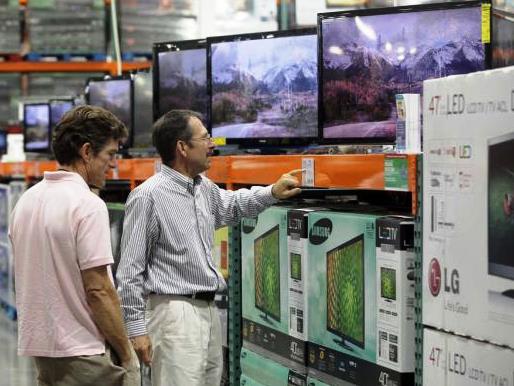 You’ve probably heard, or even spoken, some of these sentences:
You’ve probably heard, or even spoken, some of these sentences:
“We live in a digital world.”
“It’s a digital economy.”
“What are you doing about digital transformation?”
“Disrupt or be disrupted.”
“We’re in the midst of a digital disruption.”
But do you know what they mean?
For instance, what do we mean by “digital disruption?” Is digital disruption about technology startups fundamentally changing the ways that entire industries do business, such as the way Google and Facebook upended the media industry? That was pretty disruptive; the way money flows throughout the ecosystem of content producers, editors, publishers, and distributors is so different today, we can barely remember how the industry operated even a decade ago. Certainly, Amazon disrupted traditional retail. Amazon Web Services has even disrupted former high-tech stalwarts like Dell and HP. The term “digital disruption” covers a lot of ground.
And what do we mean by “digital economy”? The term describes more than just a technology-driven world. That definition is much too broad—and it discounts the fact that businesses were certainly powered by technology before this millennium. So, what exactly is different about the digital economy?
In thousands of hours working with executives to navigate digital transformation, we have found that most leaders have an “I know it when I see it” feeling about these terms, but no firm definitions. Therein lies the problem: if leaders can’t identify exactly what’s changing, how can they successfully navigate the transformation? They can’t. It’s no wonder so many digital transformations fail.
Today’s corporate leaders do agree on two aspects of digital disruption: it’s exhilarating, and it’s terrifying. Executives across the spectrum of industry are urgently struggling to identify exactly how things are changing so they can figure out how to survive—and more importantly, how to thrive.
What the Digital Economy Is Not
To fully understand what the new digital economy is, we first need to understand what it is not.
First, it’s not solely about the ubiquity of software. Too often, those who discuss this new age focus only on software, saying things like, “Software is your brand” or “Software is eating the world.” These clichés hold some truth, but plenty of software was created before the existence of the digital economy.
Second, we can’t shoehorn the entire digital economy into a few business sectors or a single industry, such as tech. Many technology companies did help to define this economy, but a wide variety of businesses are now “digital” companies too. Uber is officially considered a transport company. It is also a digital company. Other traditional and legacy businesses, like media companies and financial institutions, have also found ways to innovate and are participating in the digital economy.
Third, the digital economy is not limited to digital marketing. In the marketing space, people sometimes equate “digital” with social media, email automation, and digital advertising—technology-enabled mechanisms for lead generation. But comparing old marketing techniques with new technology doesn’t work in the digital age. Yes, more and more digital products are emerging in the social media and marketing arenas, but these products alone are not responsible for transforming the economy. The change has occurred because of a fundamental shift in business models, not just because we have new ways to advertise.
Finally, “digital” is not simply a new word for information technology (IT). Traditional IT was concerned with the operational efficiency of a business. It’s undeniable that IT gave us extraordinary improvements in how we operate businesses, but it did not transform the way we live, work, and play the way the digital economy has.
See also: 3 Ways to Maximize Your IoT Transformation
Defining the Digital Economy
The word “digital” is often used to describe any asset that relies upon bits and bytes, such as digital cameras or digital signs—but it can be applied to almost anything. The “digital economy” rests on a particular understanding of the role of digital within new business models.
Technology played a role in the economy before the turn of the century—it has long provided support for business—but we weren’t yet living in a truly digital economy. Technology could help you sell, track, and deliver, but it wasn’t the thing you bought and sold. Only when digital became the product in its own right did technology turn the economy on its head. Now that the digital asset—the technology itself—is the good or core to the service that is being offered to a target market, not just the enabler of the good or service, traditional business models are being totally disrupted.
Today, the technology itself is the value proposition. The digital product is either the asset being purchased or the primary mechanism by which the service is delivered. The digital economy is, therefore, a product economy: powered by software and fueled by data. For this reason, we will use “software product” and “digital product” interchangeably throughout the book.
Uber is a perfect example. From the very beginning, Uber thought digitally: its service is entirely predicated on the use of software, which enables anyone to hail a ride at the touch of a button. This made life more convenient for customers by an order of magnitude. It also represented a wild departure from the traditional business model of most transportation companies. Technology allowed Uber to disrupt the transportation industry: by 2017, it operated in 600 cities across seventy-eight countries and managed to give four billion rides.
Before this disruption occurred, cab companies were limited by the size of their fleet, the number of drivers they had, and the number of passengers available. Uber transcended this model by leveraging the data they could collect through software and analyzing it to provide a near-instantaneous ride service. Add to that the convenience of seamless payment transactions, and it’s no wonder Uber was able to disrupt an entire industry—one that has been around for hundreds of years.
It all comes down to having a digital product. Uber doesn’t own, operate, and maintain its own fleet of vehicles. It’s a digital company with a digital product that facilitates an entire ecosystem. To take advantage of this new economy, where technology is front and center in the way people work, live, and play, business models must adapt similarly.
David DeWolf is CEO of 3Pillar Global and co-author of “The Product Mindset: Succeed in the Digital Economy by Changing the Way Your Organization Thinks.”
Jessica Hall is Vice President of Product Strategy and Design at 3Pillar Global and co-author of “The Product Mindset: Succeed in the Digital Economy by Changing the Way Your Organization Thinks.”













